We've traveled extensively across the United States, exploring 45 states and gathering many experiences. When planning a trip to the US, the options can seem endless.
That's why we've compiled five sample itineraries to guide you through some of the country's best offers.
These itineraries draw from our travels and in-depth research, including for states like Florida, where we've meticulously planned our upcoming visit.
Whether you're drawn to the West Coast, East Coast, or the majestic Rockies, these plans are designed for road trip enthusiasts.
So, buckle up, grab your favorite beverage, and join us on a journey through these exciting routes. We'd love to hear your thoughts on these itineraries, so feel free to leave a comment at the end!
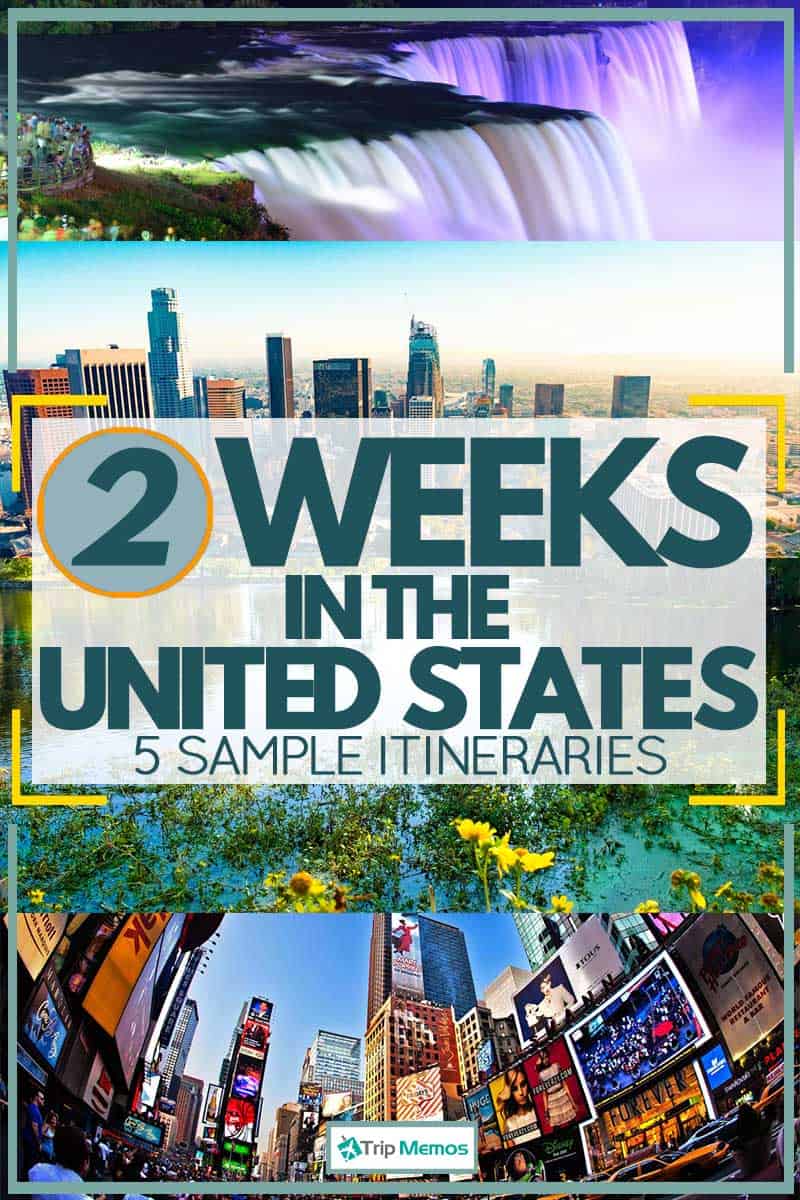
Itinerary #1: The East Coast
Touring the United States' east coast in spring, summer, and fall is best. These months will see the largest coastal cities burst with life and activity.
Come winter, most of the pit stops on any potential road trip will still be busy, but you'll need to take extra precautions to endure the eastern winter. This first road trip will take you over 1,278 miles in two weeks.
That may seem like a lot to cover, but with this itinerary, you won't miss a thing.
Day 1-3: New York City
Starting any United States East Coast tour in New York City is best. The city that never sleeps will keep you more than occupied during the first three days of your trip.
No matter what your interests are, you'll be able to find a unique and appealing attraction in NYC. This includes theater through Broadway or smaller organizations, art and science exhibits at any of the local museums, and shopping for anyone looking to bring souvenirs back home.
Some of the most notable attractions in New York City include:
- The Statue of Liberty
- Central Park
- Fifth Avenue Shopping
- The Empire State Building
- Top Of The Rock Observation Deck
- The American Museum of Natural History
- The Metropolitan Museum of Art
- The Intrepid Sea, Air, and Space Museum
- Broadway
Don't feel you must hit all these attractions over your three-day visit, but do your best to find the spots that interest you the most!
In our experience:
We've spent only four days in New York City, and while it's certainly a bucket list destination, we're in no rush to return. There's a lot to do there, but it's expensive too.
Traveling with young kids, we settled for Central Park (including the zoo!), taking the ferry to view Lady Liberty and walking just about everywhere in Manhattan.
Our favorite spot was the Highline Trail - just a lovely long park in the middle of the city.
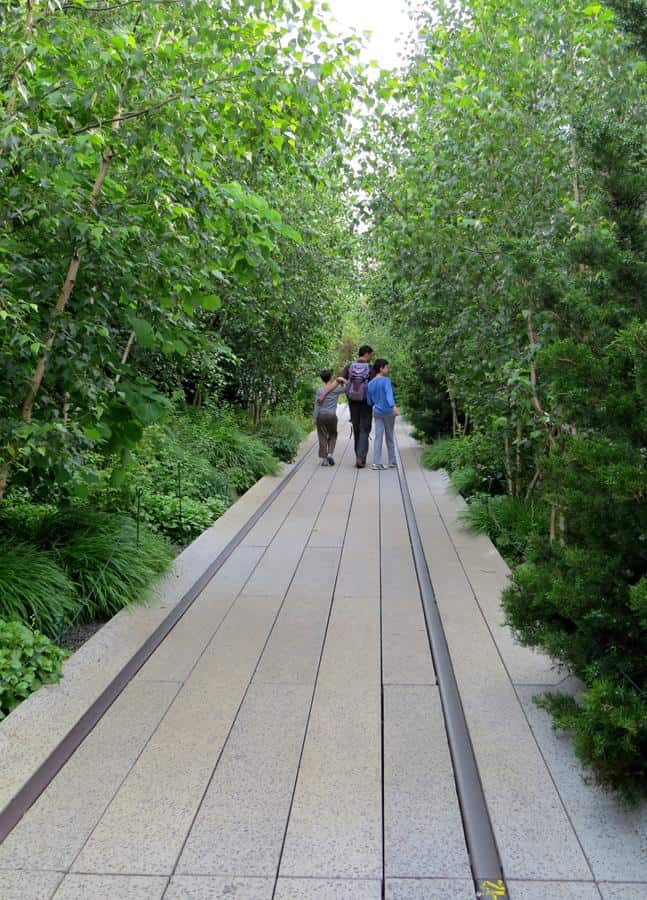
Stay charged while exploring the endless attractions of New York City with a reliable Portable Power Bank, a must-have for any urban adventure.
Day 4: Philadelphia
Once you've wrapped up your time in New York City, it's time to head south towards Philadelphia. This trip by car will take you about two hours and is 95 miles in total.
Philadelphia isn't quite as busy as New York City, but it's no less appealing to the inexperienced traveler. Here, you'll find icons from American history alongside modern marvels, including:
- The Liberty Bell Center
- Independence Hall
- Peddler's Village
- Reading Terminal Market
- Valley Forge National Historical Park
- Longwood Gardens
- Please Touch Museum
You can't go to Philadelphia without trying a Philly cheesesteak. Even if you can only visit for the day, make sure to weigh in on the local debate between cheesesteak shops.
You'll be able to determine whether Joe's, Tony Luke's, or another shop makes the best cheesesteak in the city.
In our experience:
For Americans, a tour of Philadelphia could easily take two full days. For us, a single day was enough. We visited the Federal Mint, took a tour of the Independence Hall, viewed the Liberty Bell from outside, and even had lunch at the City Tavern restaurant, part of the historic national park.
Day 5-6: Washington, D.C.
After spending a day in Philadelphia, moving to the nation's capital is time. Washington, D.C., is 139 miles and two and a half hours away from Philadelphia.
Once settled in, you can explore the political center of one of the planet's most expansive and complicated nations.
If you're intrigued by the nation's ongoing political struggles, why not schedule a White House or Capitol Building tour? Alternatively, you can spend your day walking from the Lincoln Memorial to the Washington Monument.
Any history buffs you bring on your trip will not want to miss the Smithsonian and its many exhibits on the National Mall. The National Mall is also the best place to score a Washington D.C. hot dog, so plan your visit accordingly!
In our experience:
We spent three days in DC on one of our trips. There is a lot to see and do here. In addition to everything mentioned so far, we booked a Pentagon tour. If you have the time, do that too.
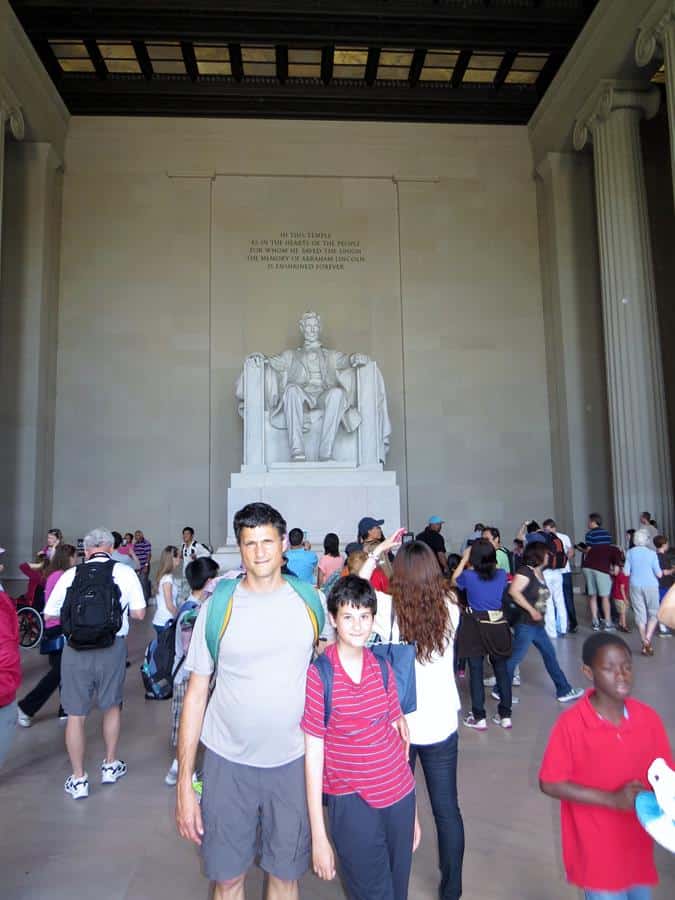
Be prepared for unpredictable weather in Washington, D.C., with a Compact Travel Umbrella, perfect for those sudden rain showers.
Day 7: Shenandoah National Park
One hour and 19 minutes away from Washington, D.C., rests Shenandoah National Park, a must-see for nature lovers and history buffs alike. Seventy-five miles outside Washington, D.C., you can tour Skyline Drive free of the urban hustle and bustle.
You can spend your day hiking along the park's many trails or biking past some of the area's most diverse patches of wilderness. You can return to a hotel or spend your night camping under the stars.
The park is open 365 days a year, though it will close if the weather is set to be poor. You'll be able to visit from sunrise to sunset. Entrance fees range as follows:
- Single Vehicles: $30
- Single Motorcycles: $25
- Individual Walk-Ins: $15
In our experience:
This is a great park for hiking and experiencing the Appalachian mountains. If you've already visited some of the parks of the Western US, such as Yellowstone or Yosemite, lower your expectations.
The scenery doesn't compare, though it is gorgeous in its own right. Still, it is a great place for hiking in the woods and taking a break from the big cities.
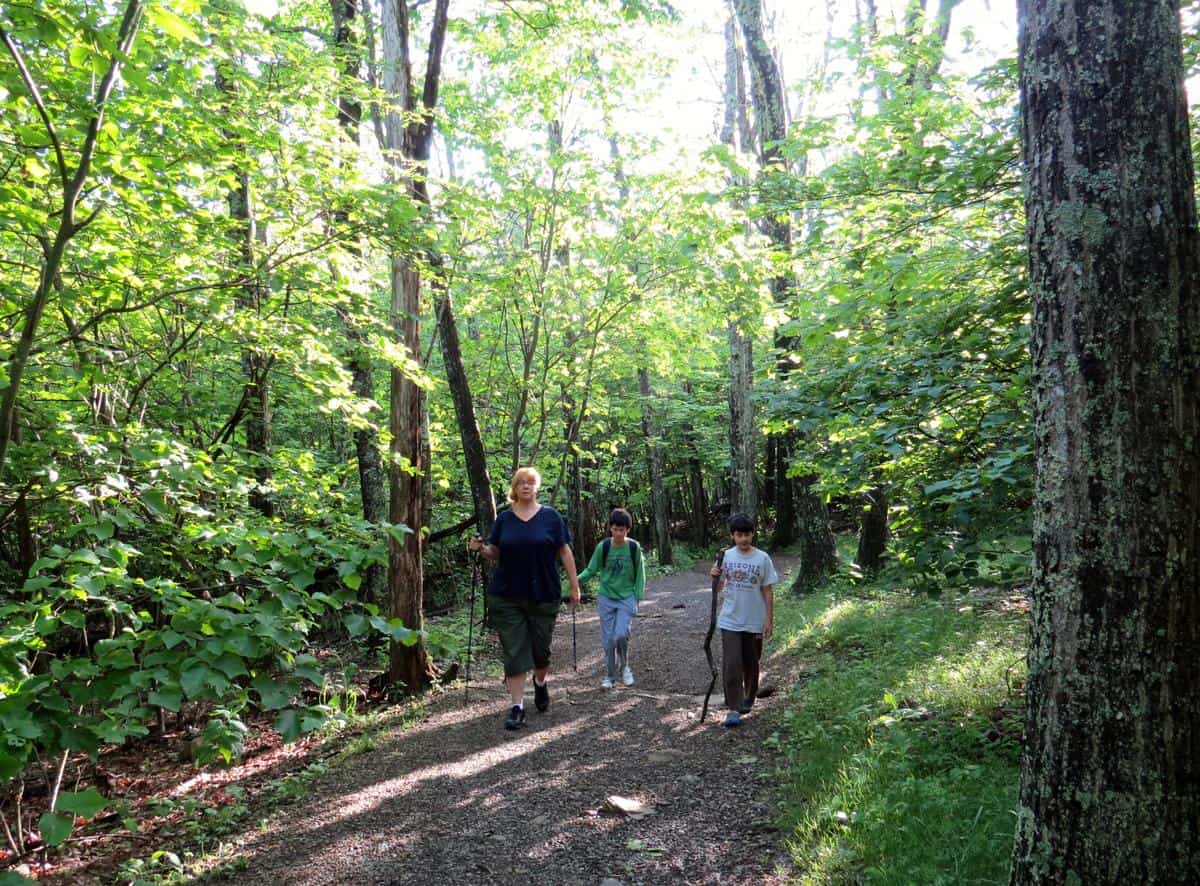
Day 8-9: Pennsylvania
Once you've finished your day in Shenandoah National Park, you can spend the next day or two touring through Pennsylvania.
You can drive back to Philadelphia if you like or visit some of the state's other attractions, including Gettysburg, Lancaster, and Amish Villages, including Intercourse and Bird-in-Hand. Other must-sees in Pennsylvania include:
- Hershey Park - any chocolate lovers on your trip with you can smell Hershey Park before they spot it. Near the Hershey plant, this amusement park embraces its founders' love of chocolate with sweet-themed rides, plays, and attractions.
- Falling Water - any art buff will recognize Falling Water as one of Frank Lloyd Wright's most famous architectural feats. Schedule a tour of this renowned home and see how Wright made history with his architectural creativity.
- Eastern State Penitentiary - are you afraid of ghosts? If so, maybe keep the Eastern State Penitentiary off of your itinerary. Those brave enough to visit will be able to tour this historic prison and learn more about its tragic history and the superstitions that haunt the halls today.
In our experience:
Even though our kids were the right age, we skipped Hershey Park. We did have a lovely time couchsurfing with a local Mennonite family and experiencing the Dutch farm way of life.
We also enjoyed visiting Gettysburg, where the kids got another Jr. Ranger badge.
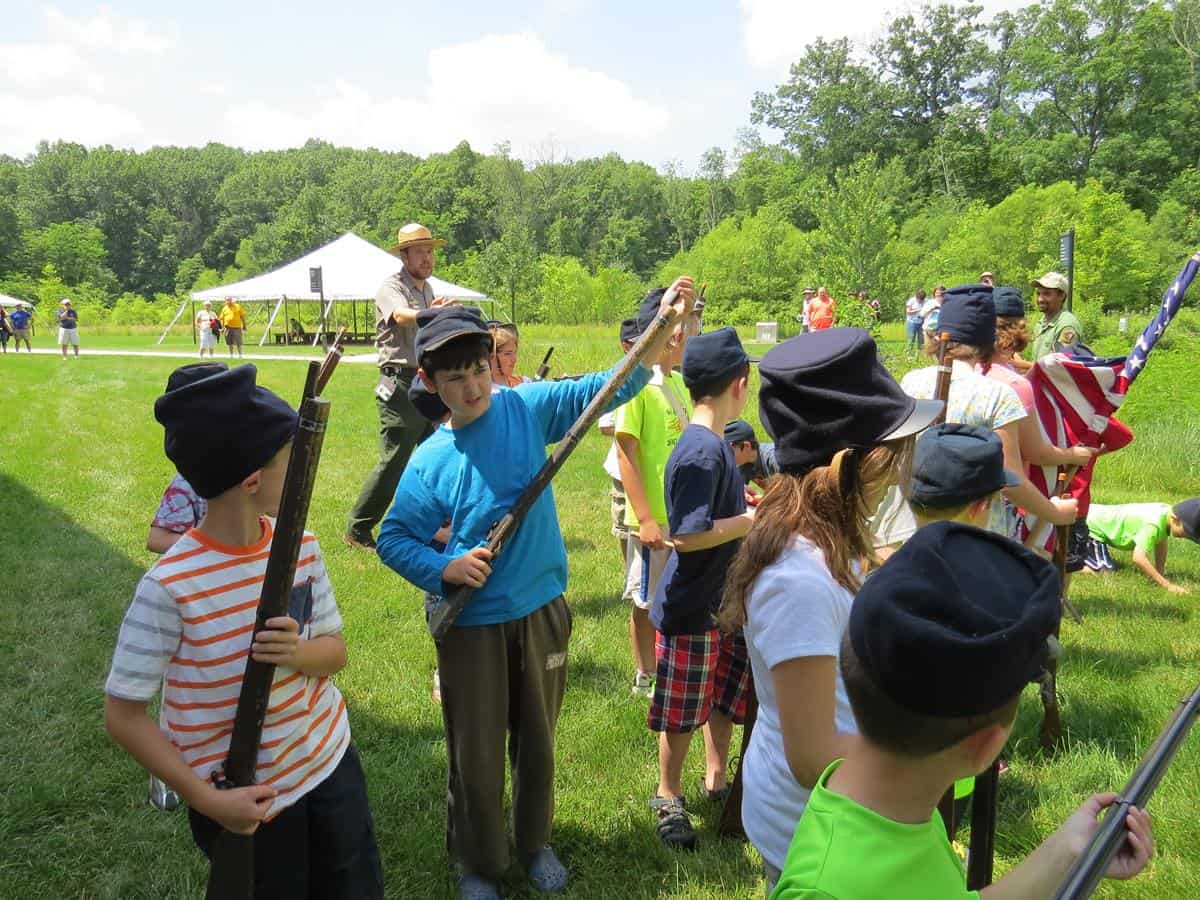
Day 10: Niagara Falls
Once you've finished your time in the city, you can spend a day getting back to nature by visiting Niagara Falls. Three hours and 41 minutes (and roughly 228 miles) away from Shenandoah National Park, you can tour the falls at your leisure. Schedule a tour with the Maid Experience to get up close and personal with America's largest waterfall.
In our experience:
This was hands-down the most impressive spot we visited on the East Coast. Yes, it's a bit too touristy and feels commercial, but it's also the most significant natural landmark on this side of the continent.
We didn't spend a lot on the attractions and mostly experienced the falls by walking along the promenade, but we didn't miss taking a boat tour to get closer to the falls.
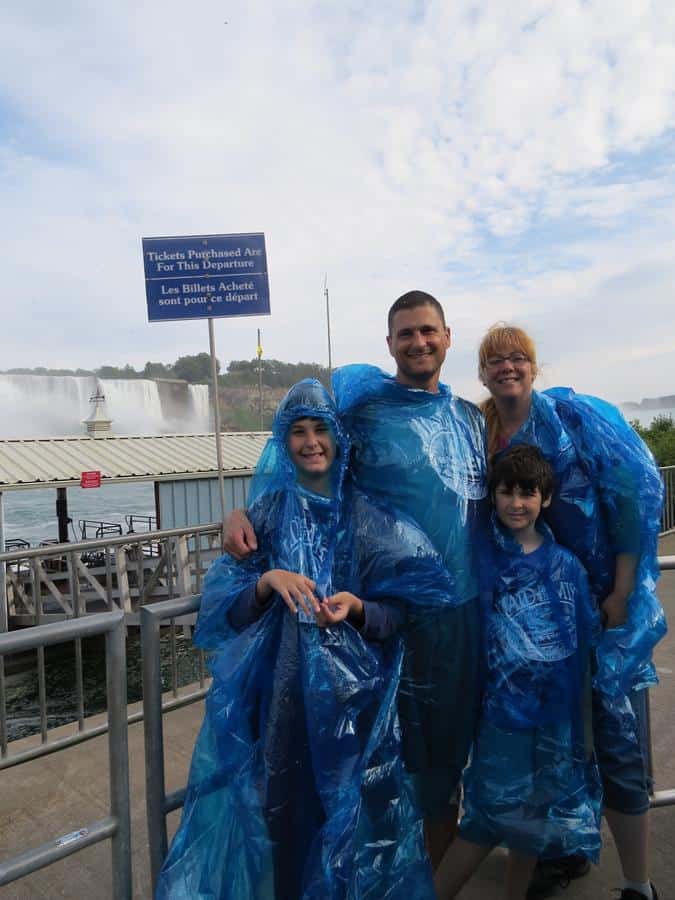
Day 11-12: Finger Lakes Area
You'll find the Finger Lakes Area just 2 hours and 15 minutes and 137 miles away from Niagara Falls. Spend a few days decompressing from your trip with time out on the water. You'll be able to fish, hike, bike, and swim in any of the area's larger lakes, including:
- Seneca
- Cayuga
- Keuka
Spend an afternoon in Watkins Glen State Park, or head out on the town for some low-pressure souvenir shopping. You can also visit the Corning Glass Museum to taste the local art scene. If you happen to visit during the winter, you may even be able to enjoy a few days of skiing!
In our experience:
We enjoyed our time in the Finger Lakes area. Hiking along Watkins Glen was fantastic!
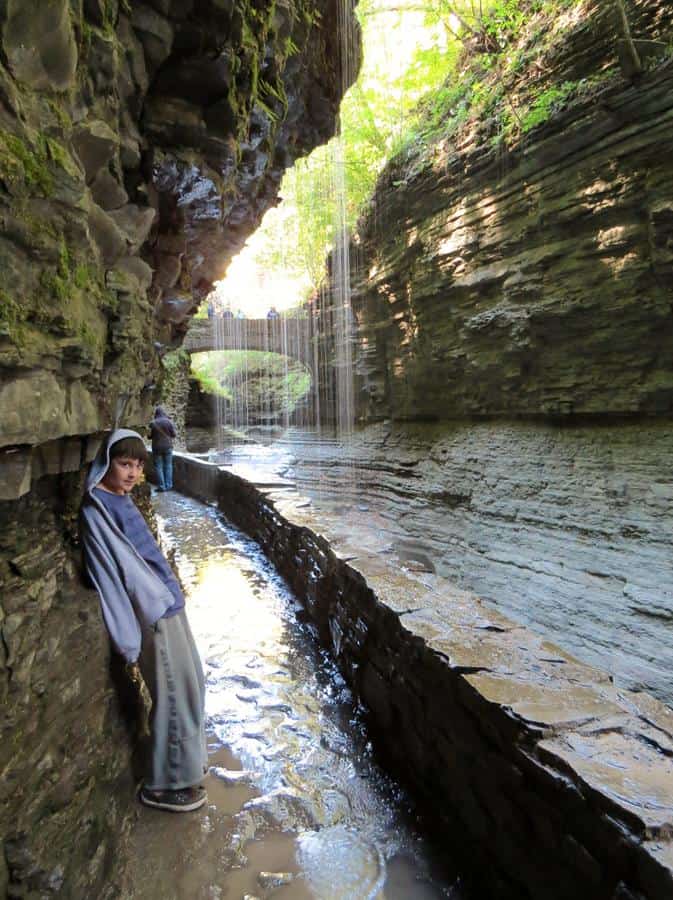
And the glass museum was an unexpected and very pleasant surprise. There were tons of demos and activities, and the kids enjoyed it all. Dan even helped create a glass goldfish, which he got to take home.

Day 13-14: Boston
After a few days out in the Finger Lakes area, you'll want to make your way back to another one of the East Coast's urban hubs. 5 hours and 41 minutes away from the Finger Lakes area, you'll find Boston ready and willing to help you wrap up your trip.
After driving 370 miles, you'll be able to pick up any last-minute souvenirs while hitting some of Boston's most exciting attractions, including:
- The Freedom Trail
- Boston Common
- The Museum of Fine Art
- The Paul Revere House
- The Museum of Science
In our experience:
We spent a couple of days touring Boston. The kids loved the Freedom Trail, which we walked from the Boston Common to the USS Constitution at the harbor.
We didn't check out the museum (having seen too many of those that week), but the USS Consitution was a great tour in its own right.
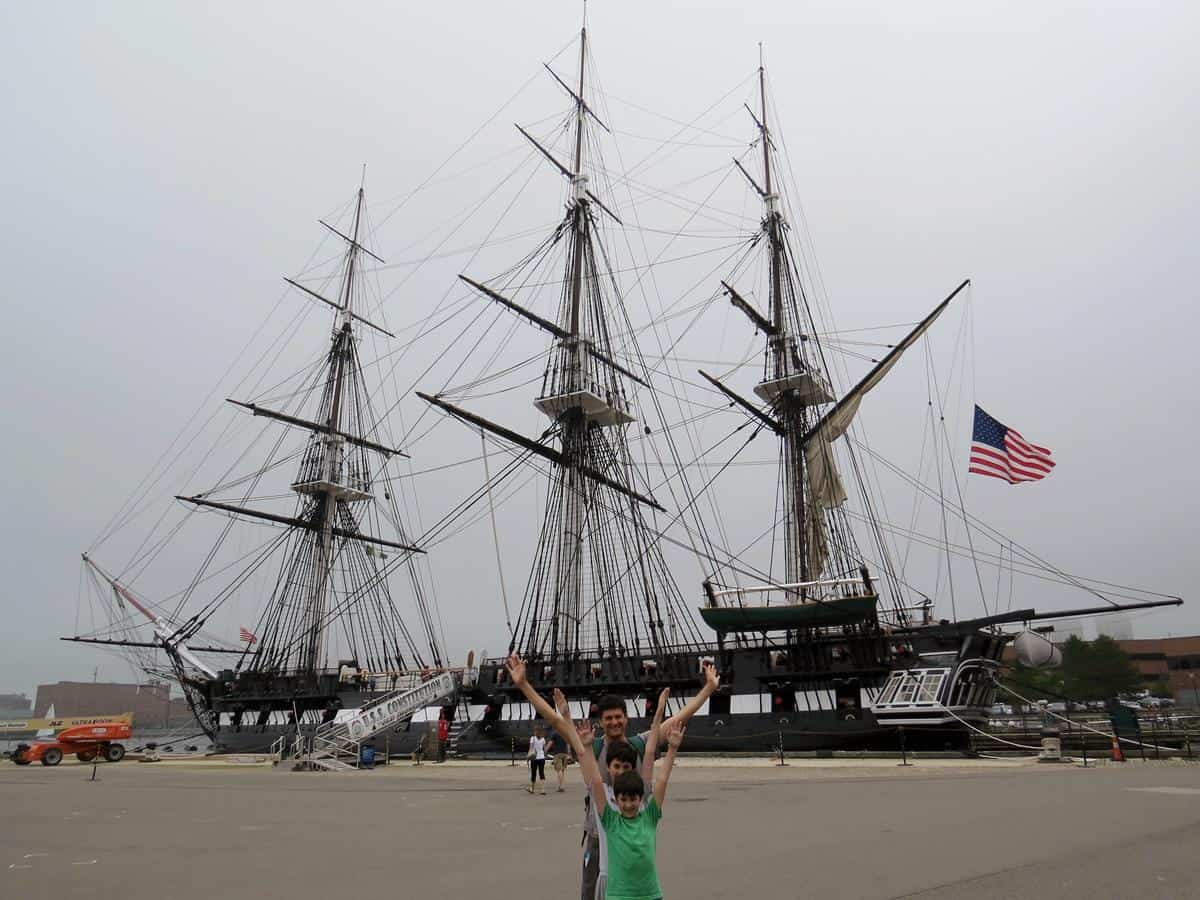
Itinerary #2: The West Coast
I confess we love the American West. The sheer size, distances, places to see, unique things you can find nowhere else, and scenery like no other.
This itinerary will get you the very best of the urban destinations of the southern west coast, with a taste of Vegas.
Days 1-3: San Francisco
There's no better place to start a tour of the West Coast than San Francisco. The city is full of exciting attractions, including:
- The Golden Gate Bridge
- Golden Gate Park
- Alcatraz Island
- China town
- Fisherman's Wharf
In our experience:
You can spend a few nights in San Francisco before moving on to your next spot. To date, we've spent three weeks touring San Francisco and the cities of the Bay Area. There's much to see and do, and we love the atmosphere.
If you're a science geek like us, don't miss out on the California Academy of Science in Golden Gate Park.

Day 4: Monterey
After a few days in California's cultural north, you'll want to head south two hours and 119 miles to Monterey. This resort town is one of the best places to rest, relax, and enjoy the best that California has to offer.
While you're in the area, you can visit:
- The Monterey Bay Aquarium
- Cannery Row
- Old Fisherman's Wharf
- Carmel-by-the-Sea
- Point Lobos
In our experience:
Monterey is a perfect family destination. We ended up spending over a week there in total and never got bored. You can read more here about things to do in Monterey and about day trips around Monterey.
Days 5-6: Highway 1 to LA
Once you're finished in Monterey, you'll want to take the scenic Highway 1 down to Los Angeles. You'll want to spread this trip over two days, stopping in Morro Bay overnight.
As you go, enjoy the unmatched view of the Pacific Ocean - the highlight of any West Coast road trip.
In our experience:
It's scenic, and we do not regret driving it along this bucket list road. However, it is a very long drive, and the road is pretty curvy in parts, so if you're prone to car sickness or don't have time, this could be a place to save a day.
If you're going on the drive, check out this post about driving Highway 1 from San Francisco to Los Angeles for more information on what to see and do along the way.
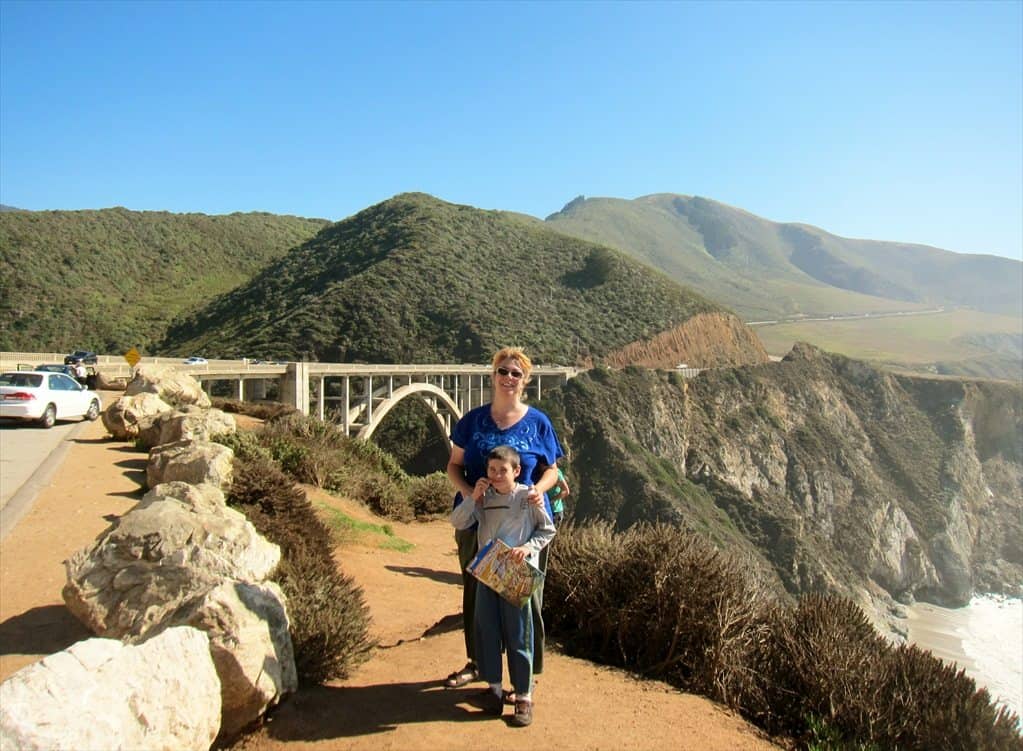
Days 7-9: Los Angeles
At the end of your five-hour, 318-mile trip, you'll have made your way to Los Angeles. Take a few days to rest and visit many of the city's hotspots, including:
- Universal Studios Hollywood
- Disneyland Park
- The Hollywood Sign
- The Hollywood Walk-of-Fame
- Santa Monica Pier
In our experience:
LA can be a lot of fun but very urban, and traffic can be difficult. If you're visiting, try to avoid driving during rush hour. Our favorite and most "LA" thing was to tour the Walk of Fame and then catch a movie at the official Disney El Capitan Theatre. And sure, Disney and Universal Studios!
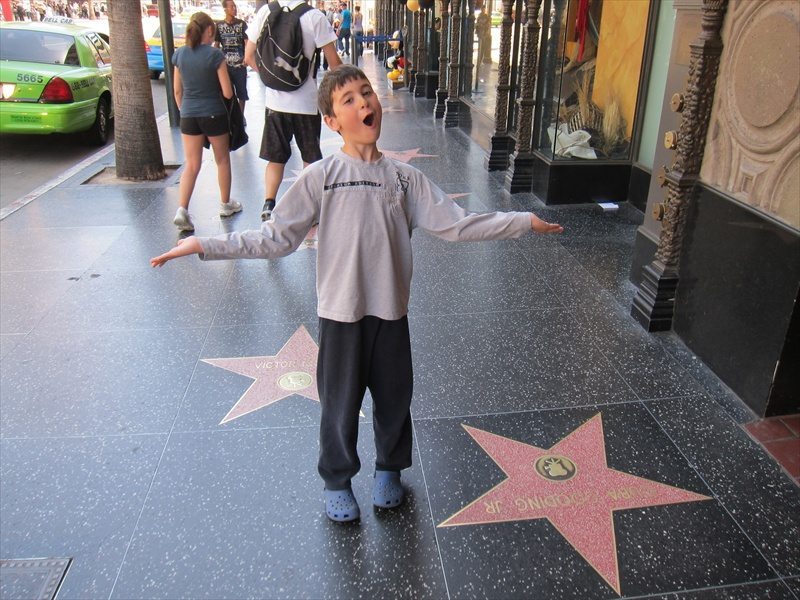
Days 10-11: San Diego
After a few days in Los Angeles, it'll be time to move on. San Diego is two hours and 120 miles away from Los Angeles and has as many attractions for you to explore as the City of Angels. Whether you're looking to relax or want to keep the high of your road trip going, you can visit any of the following spots:
- Black's Beach
- Coronado Beaches
- San Diego Zoo
- Legoland
- Sea World
- Balboa Park
In our experience:
San Diego was the first place we ever visited in the United States. We fell in love with the city and spent ten days there. It's an awesome destination for families with young kids, and the long stay allowed us to make the most of the multi-day passes to local theme parks and attractions.
If you want to save, check out our list of free, fun things to do in San Diego.
Days 12-14: Las Vegas
However, California doesn't make up the full extent of the West Coast. After San Diego, Nevada, waits for you. Take the five-hour, 332-mile drive out of California, and you'll find yourself in Las Vegas.
There's more to do in the area than visit casinos. If you're looking to end the last two days of your trip on a high note, you'll want to try and visit the following attractions:
- Red Rock Canyon National Park
- Fremont Street Experience
- The Neon Museum
- Shark Reef Aquarium at Mandalay Bay
- Adventuredome Theme Park
In our experience:
I have to say we're not huge fans of Sin City, especially not with kids. However, there's plenty to do; if you're not traveling with kids, this is a bucket-list destination.
You may love or hate Las Vegas, but it's unlikely to leave you indifferent. And if things get too hectic, there are plenty of cool things to do in the area. Check out this list of awesome day trips around Las Vegas for more ideas.
One place that many people don't want to miss out on is the Grand Canyon - you can take an organized tour from any Las Vegas hotel or even book a helicopter ride above the greatest canyon on earth.
Zion National Park and Bryce National Park are also not far away, and you can switch a couple of days in Vegas and add them to your plans.
Itinerary #3: California & Las Vegas
What if you want to add a bit of wilderness to your tour of the west coast? You can diversify the previous itinerary with a trip to Yosemite, so long as Tioga Pass is open. We recommend traveling in the spring, summer, and fall when the weather will be most agreeable and the wildlife most active.
Be prepared for a long trip over two weeks, and you'll be traveling 945 miles! Let's highlight some of the stops you'll come across along the way.
Days 1-3: Los Angeles
We've already touched on Los Angeles' many appealing hotspots. You'll start this modified road trip in the City of Angels. For your first three days, you'll have ample opportunity to explore the area's many theme parks, beaches, and other attractions.
Days 4-5: Highway 1
After that initial taster, you'll want to take the road via Highway 1 and follow the coast of California up to Monterey. You can break this five-hour trip up into two days, stopping at Morro Bay for rest after your first day.
Be sure to have your camera ready - nothing beats the view off Highway 1.
Day 6: Monterey
Once you've pulled off the highway, you can spend a day exploring the nooks and crannies that make up Monterey. A solid 318 miles away from Los Angeles, you'll enjoy a bit of urban energy without the stand-still traffic.
Days 7-9: San Francisco
After Monterey, driving to San Francisco is two hours and 119 miles. You can spend two days in this sprawling city, traveling via cable car and enjoying the local food scene. Walk across the Golden Gate Bridge or sun yourself on the beach before hitting the road again.
Days 10-11: Yosemite
After your trip north through California, it'll be time to head east. You'll drive for just over three hours and 167 miles to reach the outskirts of Yosemite. Over the next day and a half, you can explore the national park while staying in Yosemite Valley.
Yosemite National Park is open 24 hours a day, seven days a week. Entry fees break down as follows:
- Motorcycle: $30
- A non-commercial vehicle with 15 or fewer passengers: $35
- Bicycle, horse, or foot entry: $20
You can camp in the park if you've made a reservation.
In our experience:
Yosemite is one of the most beautiful places we've ever visited. If your trip happens anytime between April and early July, you must visit to see the waterfalls in all their glory. We visited the park three times already, and I know we'll be back!
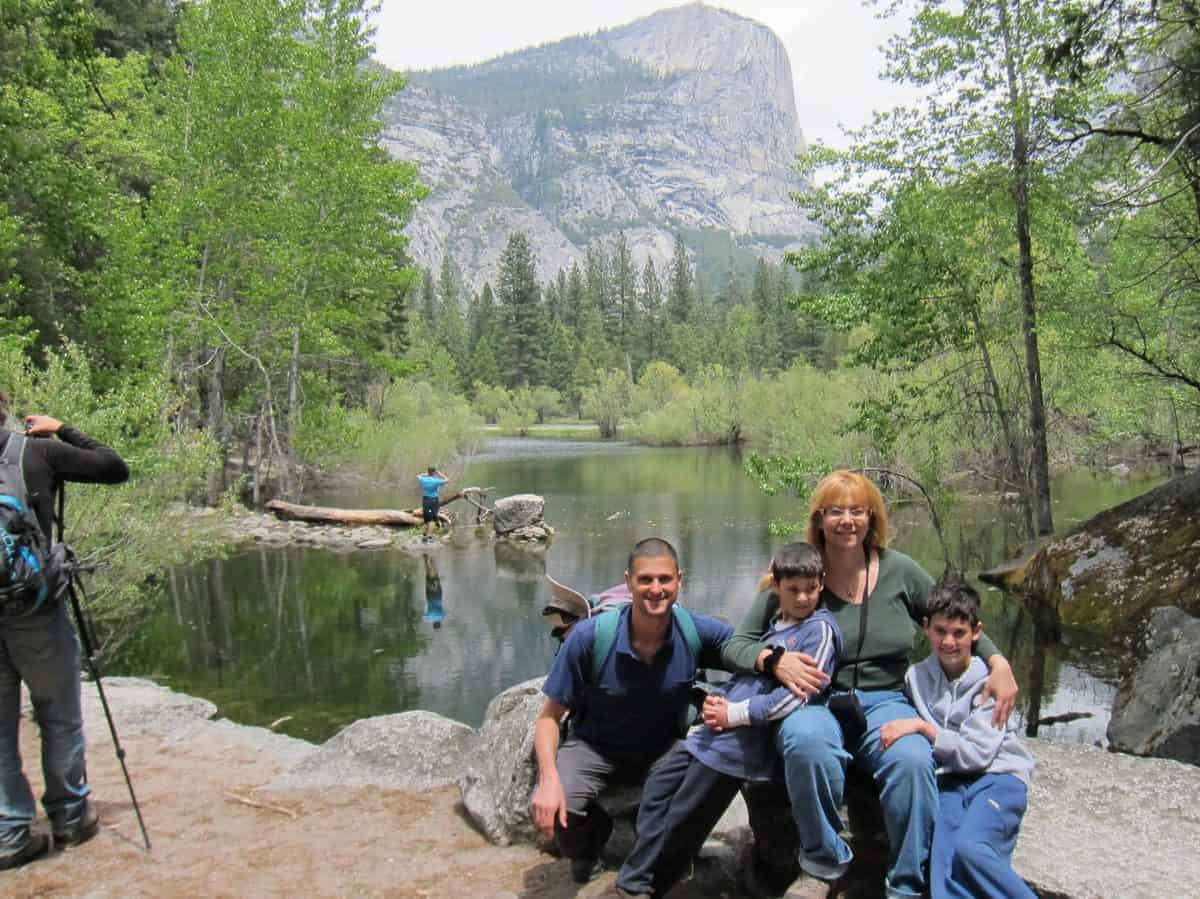
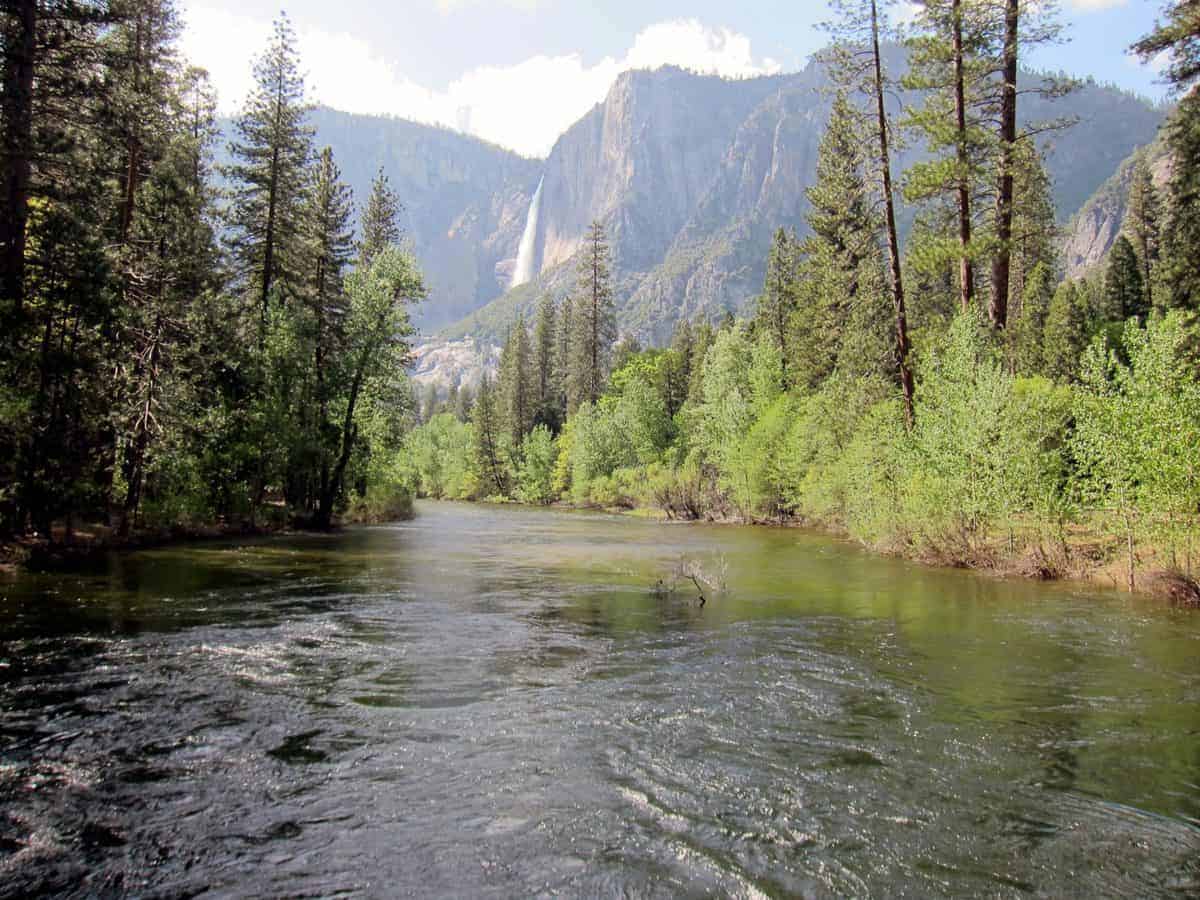
Check out this post for even more gorgeous photos of Yosemite National Park.
Day 12: Drive from Yosemite to Las Vegas
After you've spent a few days hiking, biking, canoeing, and enjoying one of the United State's best known-natural attractions, you can pack up your bags and head south down into Nevada.
After a six-hour and 341-mile drive, you'll find yourself in the Entertainment Capital of the World. There's more than one way to cover the distance and plenty to see en route. Read this guide to learn more about driving from Las Vegas to Yosemite National Park.
Days 13-14: Las Vegas
You can spend the last two days of your trip enjoying all of the wonders Las Vegas has to offer. This could mean visiting one of the many casinos on the Las Vegas strip or touring the local theme parks and other attractions.
Once you've reached the end of your visit, you can head home via car or flight through McCarran International Airport.
Itinerary #4: The Rocky Mountains
Probably our favorite area in the entire continent. For summer-specific road trips, you can always take to the peaks of the Rocky Mountains. By far the longest of the road trips noted here, this itinerary will take you over 1,107 miles in two weeks.
Pack your bags carefully, and research gasoline prices ahead of time! This trip may be long, but it's well worth the time.
Day 1: Salt Lake City
You'll start on your Rocky Mountain adventure when you land in Salt Lake City, Utah. Get comfortable for your first day by taking a leisurely tour around town. Salt Lake City is full of exciting places to eat and visit, including:
- Temple Square, for Mormon architecture
- Red Butte Garden
- Hogle Zoo
Be sure to book a hotel for the night - you'll need all the rest you can get for the days ahead.
In our experience:
Salt Lake City is a great base for starting and ending a tour of the Rockies. Half a day to a day exploring the city itself is probably enough unless you are very interested in the local history.
Day 2: Drive to Jackson, WY
After your day in Salt Lake City, it'll be time to pack up and head towards Wyoming. You'll spend roughly four and a half hours on the road as you drive toward Jackson, covering 277 miles. Be sure to stop for food and photos along the way!
Day 3-4: Jackson and Grand Tetons National Park
After spending a relaxing night in Jackson, you'll have two days to explore the town and the nearby Grand Teton National Park. Grand Teton is a mere eight minutes from the center of Jackson, making it a quick and easy trip for anyone looking to stretch their legs or spot some of the state's iconic wildlife.
Grand Tetons National Park is open 24 hours a day, seven days a week. You'll ideally want to visit in the summertime to avoid the worst weather. Entry fees break down as follows:
- Private vehicles: $35
- Motorcycles: $30
- Foot or bicycle entry: $20
Register for an annual pass on the national park's website.
In our experience:
We spent a total of a week here, and that wasn't nearly enough! This is a gorgeous park, and Jackson is a fantastic Western-style town. The only downside to visiting Jackson is that it's also incredibly expensive.
Here's a tip: Look for accommodation at least half a year before your trip and search for vacation rentals and condos. You should spend at least a few hours in Jackson and at least a day and a half hiking in the Grand Tetons.
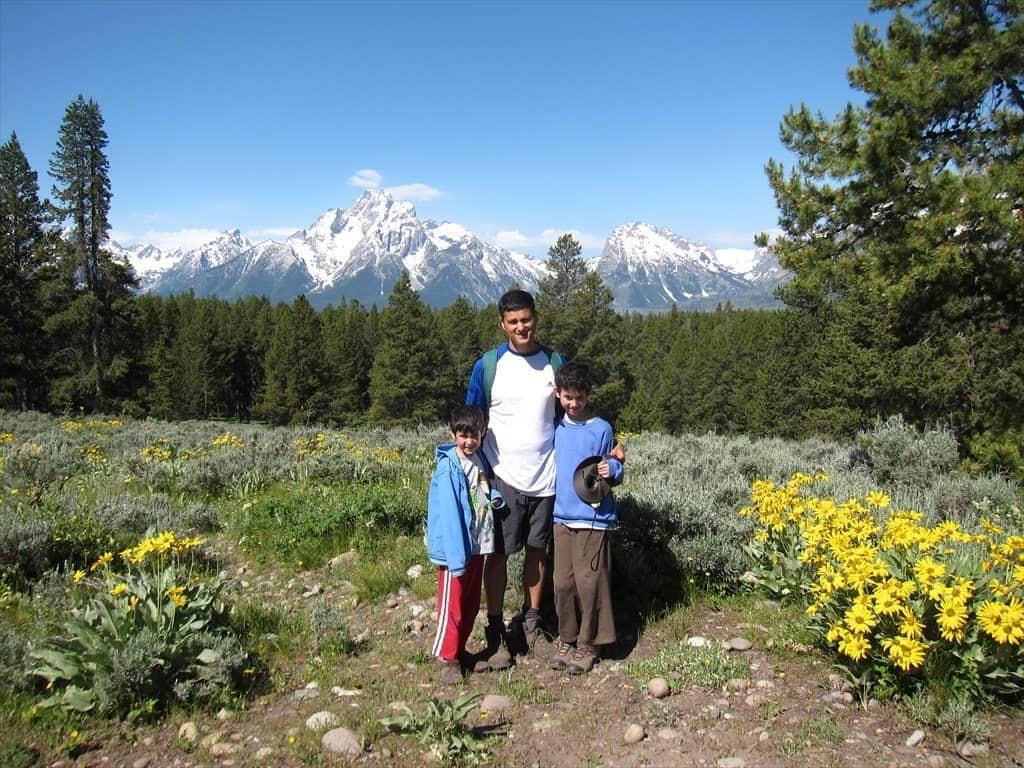
Days 5-8: Yellowstone National Park
Once you've finished exploring the Grand Tetons, it's time to head towards the west's other iconic state park: Yellowstone. Drive just over two hours and 100 miles from Jackson, and you can explore Yellowstone National Park at your leisure.
We recommend staying overnight in the park - camping or at one of the local resorts - to get the full Yellowstone experience.
Yellowstone National Park is open 24 hours a day, seven days a week. Entry fees break down as follows:
- Single vehicles: $35
- Motorcycles: $30
- Bikers or foot traffic: $20
In our experience:
In a nutshell, Yellowstone is awesome. A unique combination of out-of-this-world scenery, wildlife, and a unique backstory. We spent three weeks in this park, and I'm sure we'll be back. Here's our top 10 list for visiting Yellowstone.
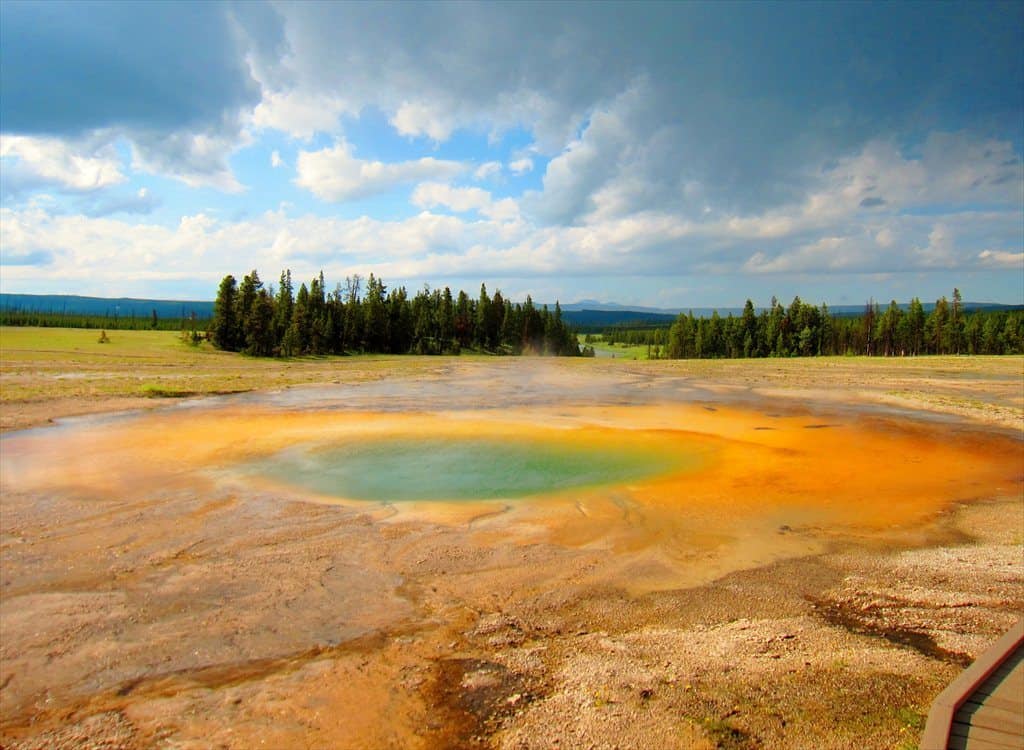
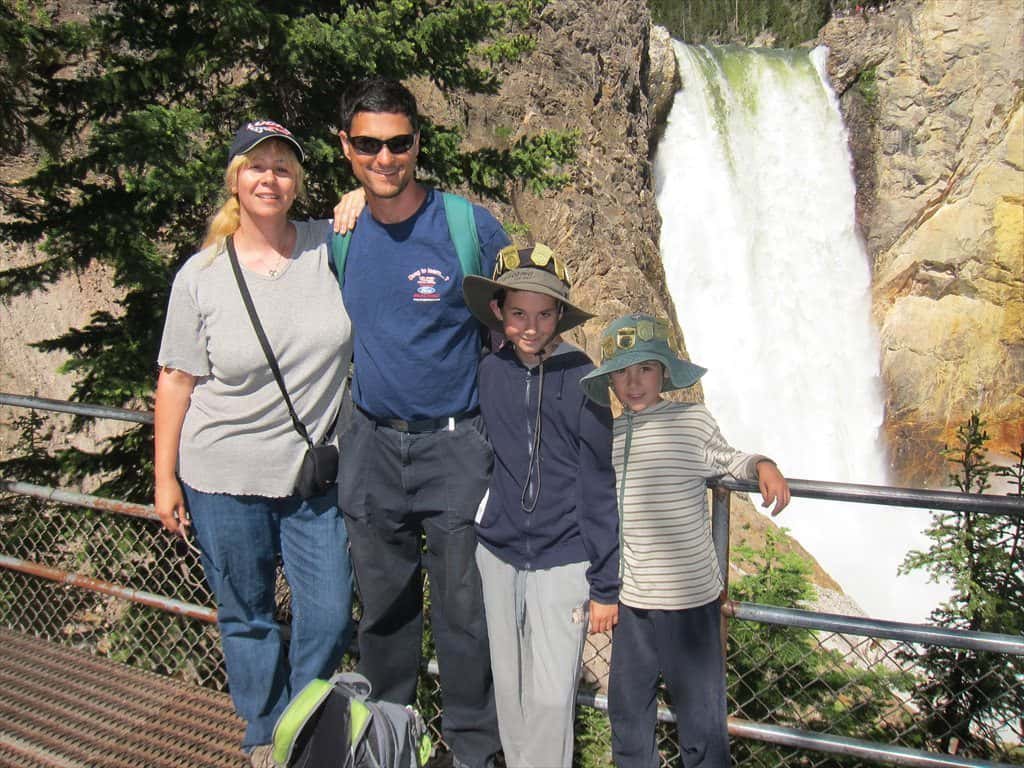
Day 9: Drive to the Denver area
After a few days in Yellowstone, you can head towards Colorado and the broader Denver area. This leg of your journey will take just under ten hours and will have you crossing 587 miles.
Read our 37 road-tripping tips to ensure these long drives are easy and fun!
Day 10: Rocky Mountain National Park: Estes Park to Granby via Trail Ridge Road
Once settled in the Estes Parks area, you can visit Rocky Mountain National Park. Take Trail Ridge Road into the park to enjoy truly unbelievable views. The drive down Trail Ridge Road will take an hour and a half for 74 miles.
Once you arrive at Rocky Mountain National Park, you can stretch your legs on many hiking and biking trails.
Rocky Mountain National Park is open 24 hours a day, seven days a week - though do be careful if you're visiting during the colder months of the year, as snowfall can block off some of the roads. The park's entry fees break down as follows:
- Single vehicles: $35
- Motorcycles: $30
- Hikers or walkers: $20
You can spend the night after you visit Breckenridge for a smoother morning drive or head straight to Independence Pass.
In our experience:
Rocky Mountain is a gorgeous national park that many people ignore. Spectacular scenery and lots of hiking trails. Remember that the mountains are tall here, so you must be prepared for mountain conditions even in the summertime.
This picture was taken along the Trail Ridge road in the middle of June.
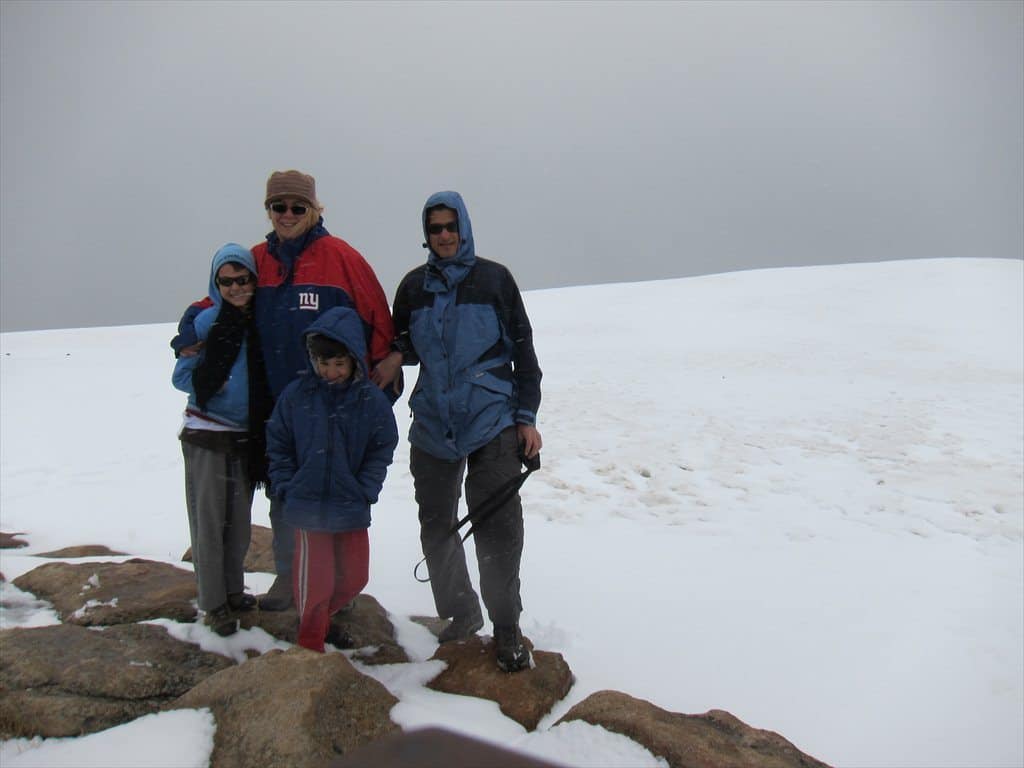
The weather was much better on lower elevations that day:
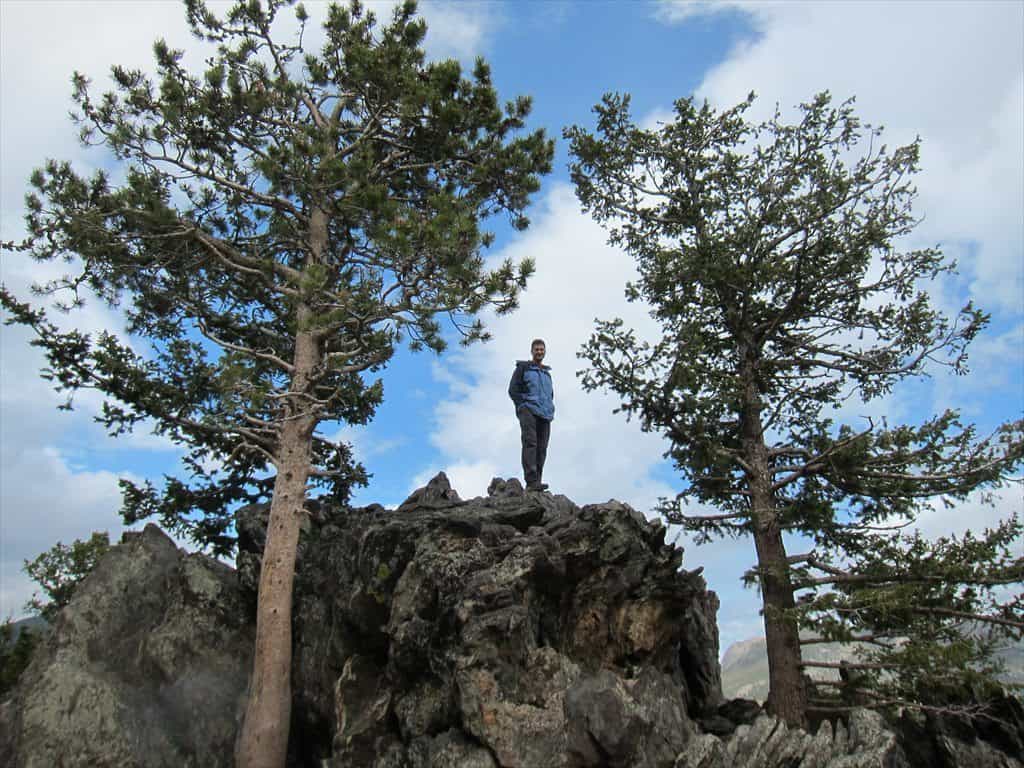
Day 11: Drive along the Independence Pass & hike the Maroon Bells
You'll want to leave Rocky Mountain National Park via Independence Pass the next day- or that same evening. Take some time out of your 45-minute drive to hike the Maroon Bell.
Once you're satisfied with the local views and exercise, you can follow the pass out to I-70. Alternatively, you can spend the night in local Aspen to enjoy local cuisine and relaxation.
In our experience:
Driving the Independence Pass and hiking the Maroon Bells were highlights of visiting Colorado. So much so that we have a post dedicated to driving the Independence Pass. Aspen is an interesting little ski town; it's quite fancy. Possibly too fancy for our taste.
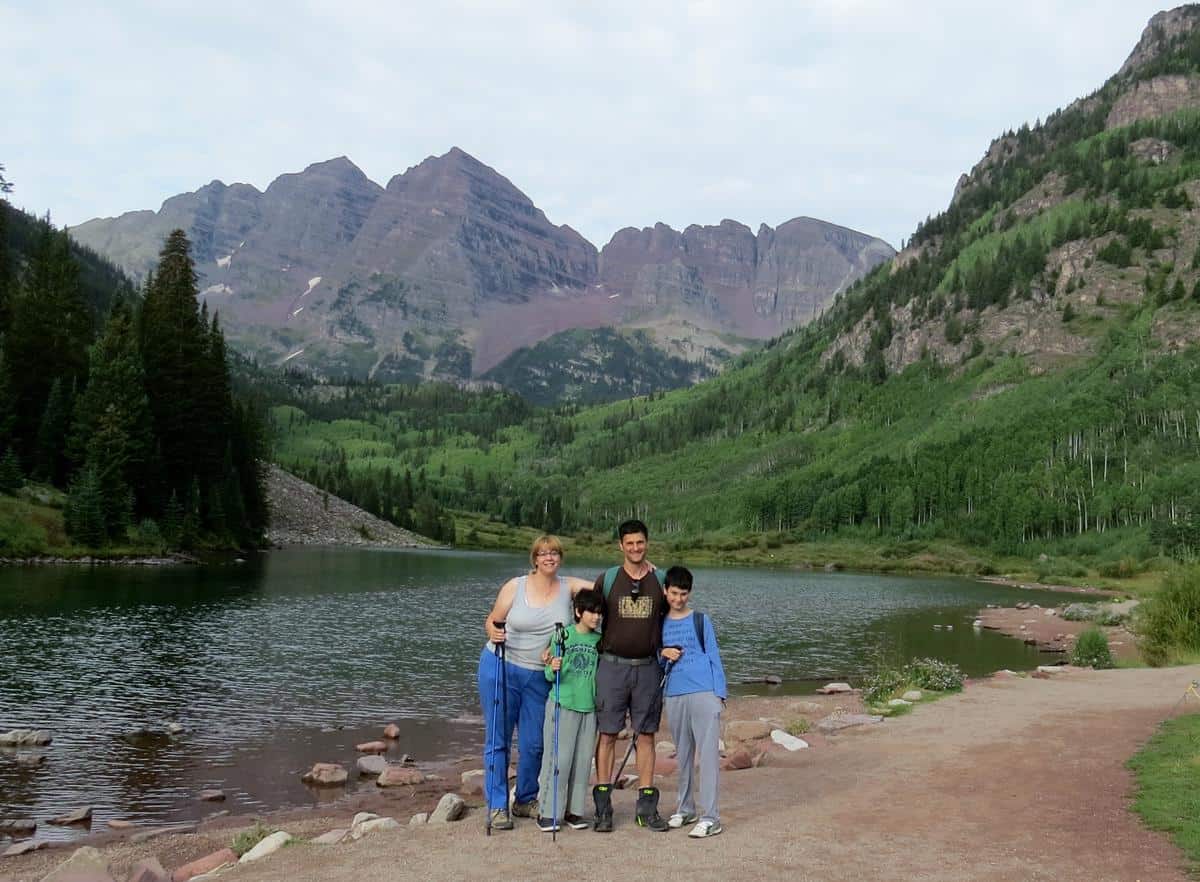
Day 12-14: Drive via I-70 to Denver Area
As your trip ends, you'll want to take the I-70 back into the Denver area. You can use these last two days of your trip to visit the places you didn't see in Denver previously. Ski, shop, eat, and make the most of your time.
Once satisfied with your stay, you can head to the Denver International Airport to return home.
Itinerary #5: Florida
This trip through Florida will take you over 909 miles in two weeks. Tour Florida between winter and early spring, and you'll be able to enjoy some of the state's biggest attractions without worrying about traffic or crowds. Here's more about the best time to visit Florida.
Day 1: Miami
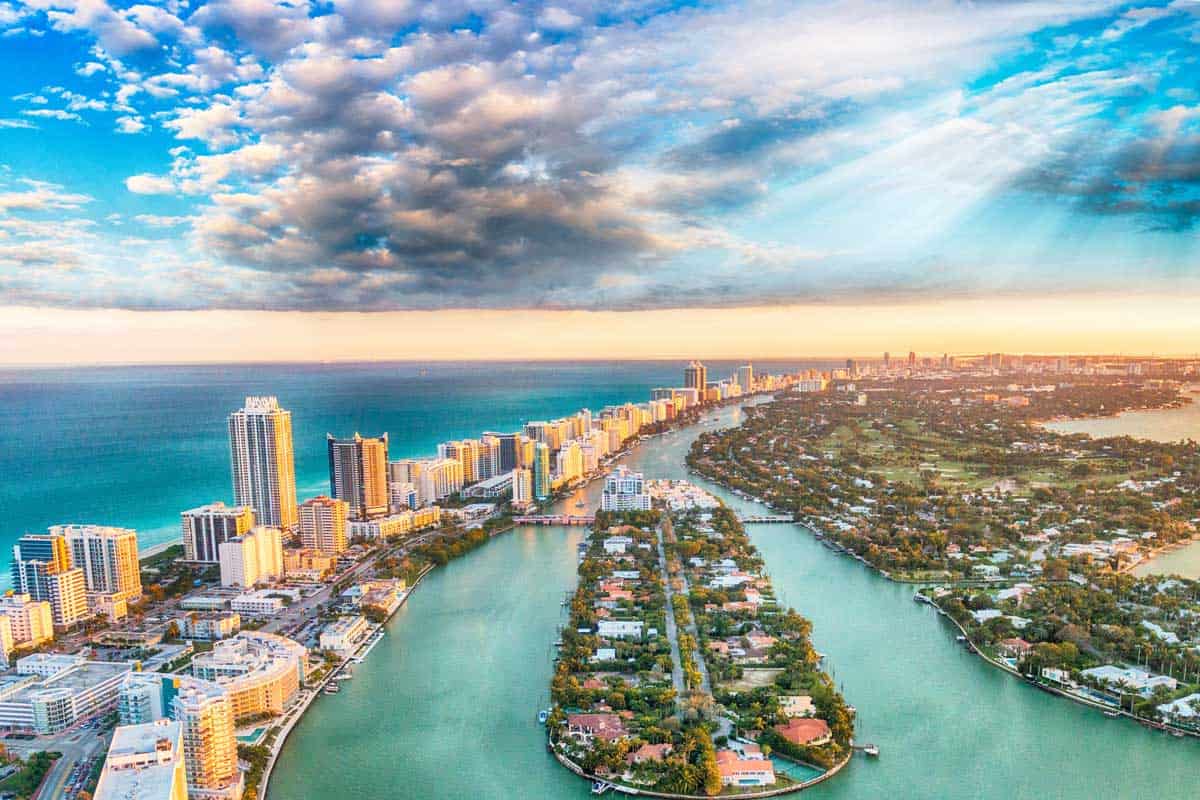
Where better to start on a trip through Florida than in Miami? As one of the largest urban centers in the state, you'll find plenty to do in the city alone. You're also free to use Miami as a base of operations, going back and forth as you explore the rest of the state.
Some of the best attractions in Miami include:
- The Bayside Marketplace
- Jungle Island
- Vizcaya Museum and Gardens
- Miami Seaquarium
- Perez Art Museum Miami
Be sure to try a Cuban while you're in town! There's nothing quite like the Miami good scene.
Day 2: Everglades NP Flamingo area
48 minutes and 41 miles from Miami, you'll find one of Florida's largest natural wonders: the Everglades. On the second day of your trip through the Sunshine State, you'll want to make your way down to the NP Flamingo area.
Open between 8 AM and 4:30 PM between November and April, the NP Flamingo area is the perfect spot to canoe, hike, bike, and get a closer look at some of Florida's native wildlife.
Make sure you read our detailed guide about visiting the Everglades National Park.
Days 3-4: The Florida Keys
You'll want to head further south once you've spent the day in the Everglades. You'll find the Florida Keys 48 minutes and 36 miles away from the Everglades. The Florida Keys are the perfect marriage of bustling and relaxed.
You can spend two days exploring the island's nooks and crannies or sunning yourself on the beaches.
Some of the Keys' best attractions include:
- Molasses Reef
- Dolphins Plus Bayside
- The Overseas Heritage Trail
- Island Dolphin Care
- Key West Sunset Sail
At the end of your days, you can return to Key West and Key Largo to rest and recharge for the day. Here's our list of the best things to do in the Florida Keys.
Day 5: Fort Lauderdale and the Treasure Coast area
Fort Lauderdale and the Treasure Coast are just north of Palm Beach. The city is only 91 miles and an hour and a half away from the Florida Keys. While you're in the city, you'll be able to visit:
- The Historic Stranahan House Museum
- The Museum of Discovery and Science
- Butterfly World
- Bonnet House Museum and Gardens
Day 6: Kennedy Space Center & Ocala
The Kennedy Space Center is 170 miles from Fort Lauderdale and is Florida's hub for space activity. Daily admission for adults costs $57 and $47 for children.
There are applicable discounts for active military representatives and seniors. Once you've paid your way in, you'll be able to tour the on-site attractions like:
- Heroes & Legends
- Behind the Gates
- Race to the Moon
- Shuttle: A Ship Like No Other
- NASA: Now + Next
- Plan Your Mission
While you can make the 3-hour road trip back to the city, spending the evening after your tour in Ocala will be much easier.
Day 7: Silver Springs State Park or Homosassa State Park
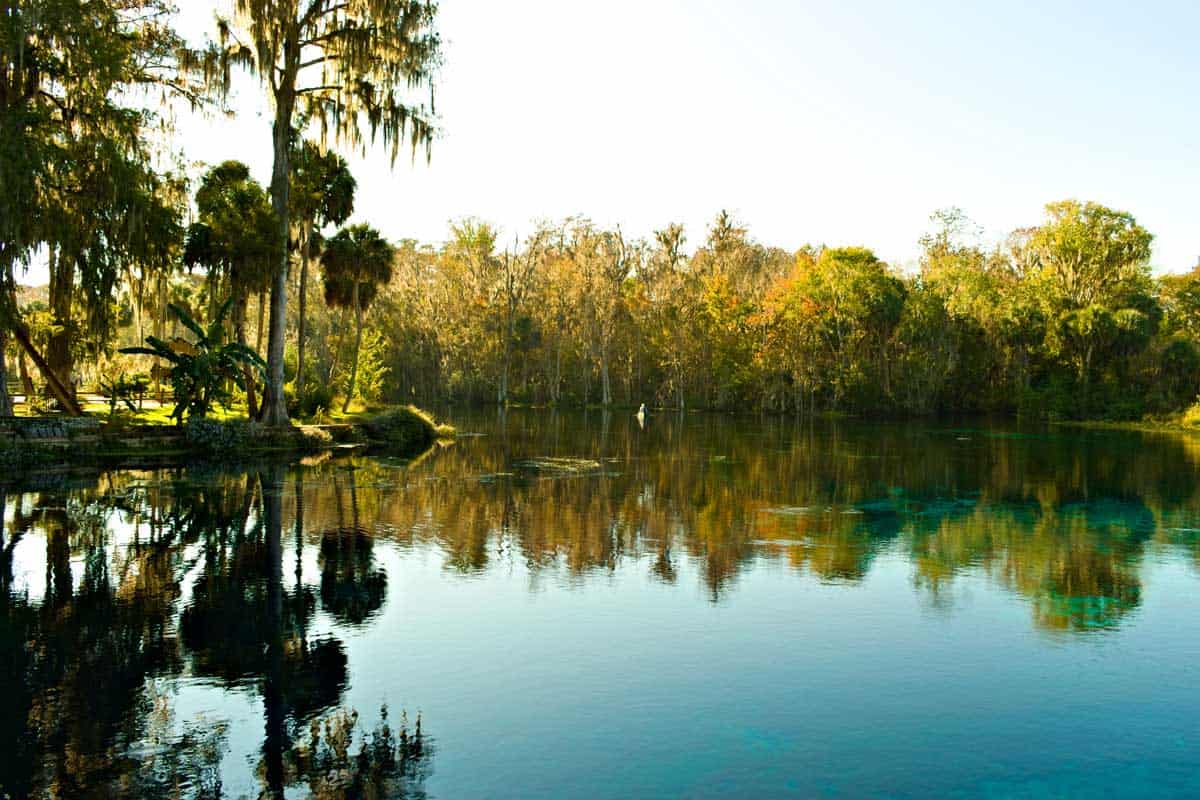
If you're looking for a day away from Florida's urban centers, you can drive twelve miles to one of the local state parks. Silver Springs State Park and Homosassa State Park are nearby and will offer you a full day of relaxation and exploration.
- Silver Springs State Park is open from 8 AM until sunset all year round, and it only costs $2 per person to enter.
- Homosassa State Park is open weekly between 9 AM and 5:30 PM. Children can enter for $5, and adults can enter for $13.
You can hike, canoe, and bike at both parks.
Days 8-10: Orlando
After a day of relaxation, why not head to one of the most magical places on earth? Orlando is only an hour and a half and 76 miles from Ocala. While there are other attractions besides Universal and Disney, visiting Orlando without dropping by one of the two amusement parks is almost impossible. Read more about the cost of a trip to Orlando.
- The Disney Parks are open between 7 AM and 11 PM daily. A one-day ticket costs $109 for adult visitors.
- Universal Orlando opens at 9 AM, and its closing time varies. A one-day ticket costs $110 for adult visitors.
Day 11-12: Tampa Bay area
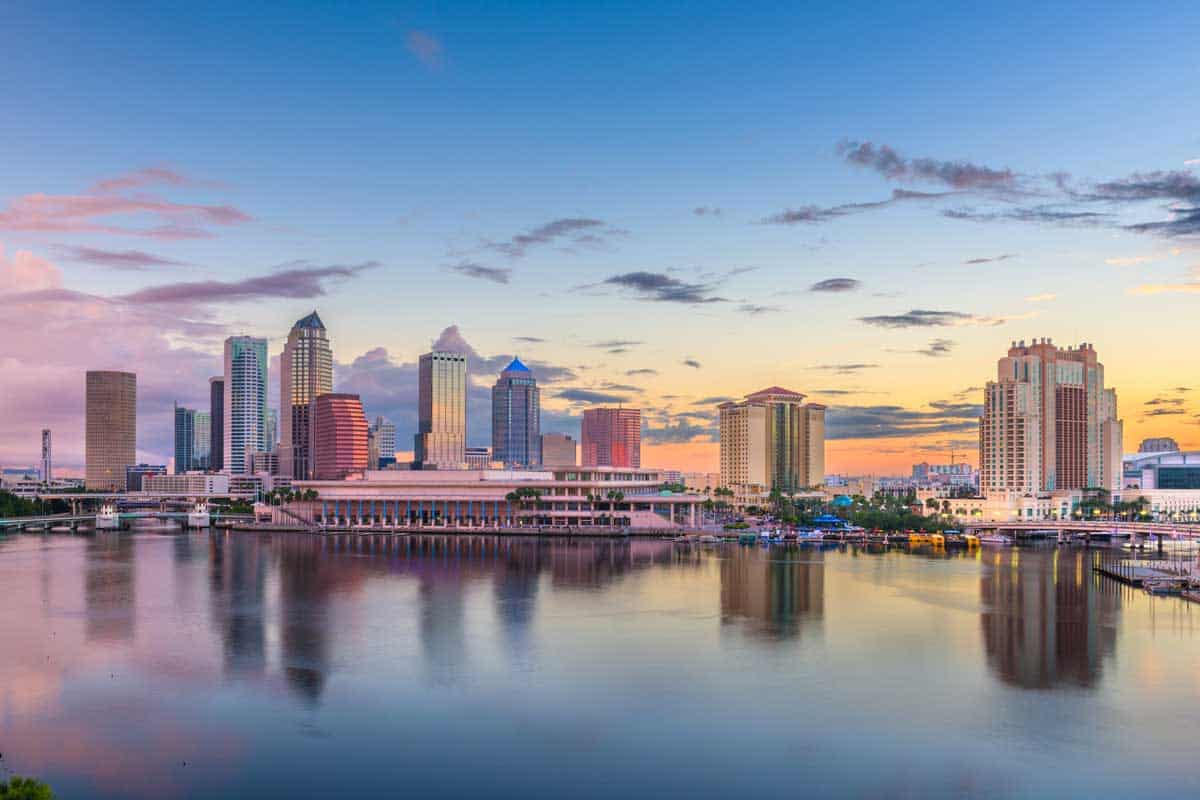
After exploring Orlando's theme parks for a few days, you can drive an hour and a half to the Tampa Bay area. After your 85-mile drive, you'll be able to spend a few days coming down from your theme park visit while exploring some of the local attractions, including:
- Anna Maria Island
- Fort De Soto Park
- The Florida Aquarium
- The Salvador Dali Museum
- The Egmont Key National Wildlife Refuge
Day 13: Sarasota and Naples
On your way out of the Tampa Bay area, you'll want to pass through Sarasota and Naples via the Tamiami Trail and Shark Valley. On your way, you can stop by the Everglades National Park and take one last airboat tour. Here's our post about things to do in Naples, FL.
Day 14: Miami
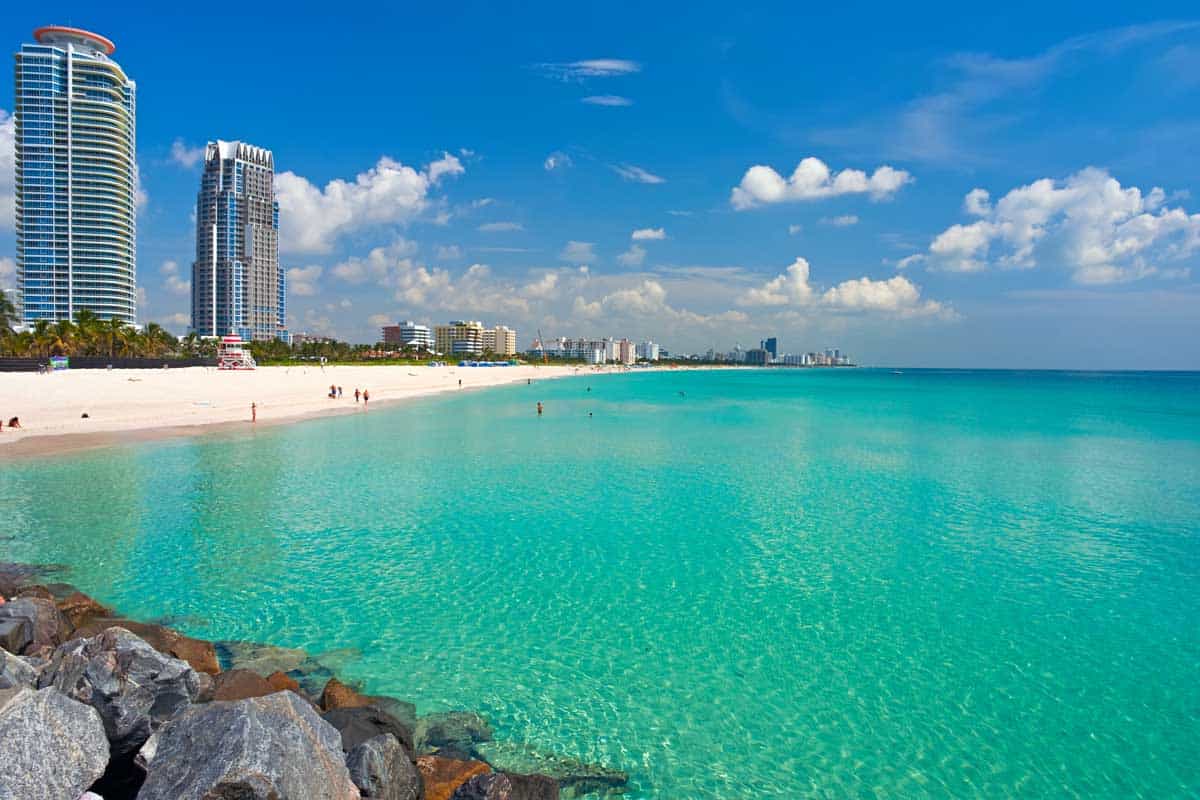
At the end of your trip, you'll want to drive back to Miami to wrap up your tour. After a two-hour and 126-mile drive, you can continue exploring Miami or go to the airport, where you can head back home.
Explore the USA!
There is much to see and do; two weeks is just the beginning! If you can, take more time to explore or plan on returning soon (we usually do both!)
We hope these itineraries inspire you to go out and explore these amazing destinations! Please use the comment form below if you have any questions or comments. We love sharing our experiences and helping others make the most of their traveling!
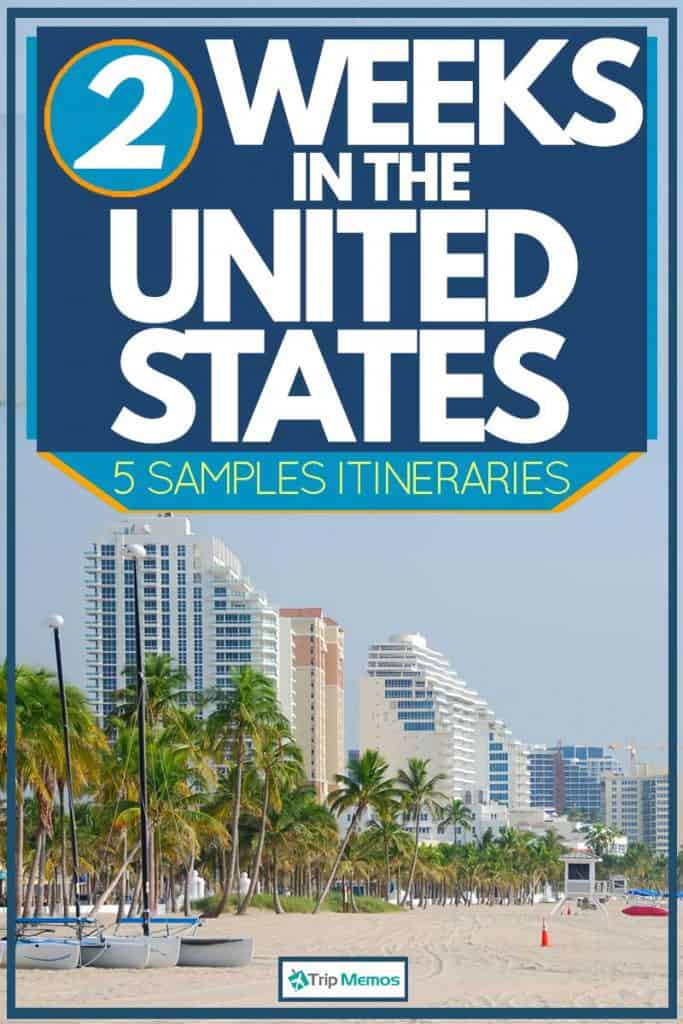



Hi… Do you have a blog on using public transpo in going around different states or within a state? 🙂
Hi Chariza,
I haven’t don’t that myself, but I know people who have traveled across the US using public transport. The best way to get a sense of what’s available for your itinerary would be to use Google maps, set your course and see what comes up under public transport. Good luck!